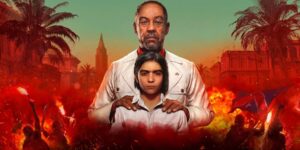
The Far Cry franchise is undoubtedly one of the more well-known franchise amongst gamers. 18 years on and after multiple themes and settings, the franchise seems to have come full circle in Far Cry 6, with the game exuding all the charms and wiles of the tropics, while also injecting an absurd amount of chaos into the whole scenario.
Big Trouble In Little Yara
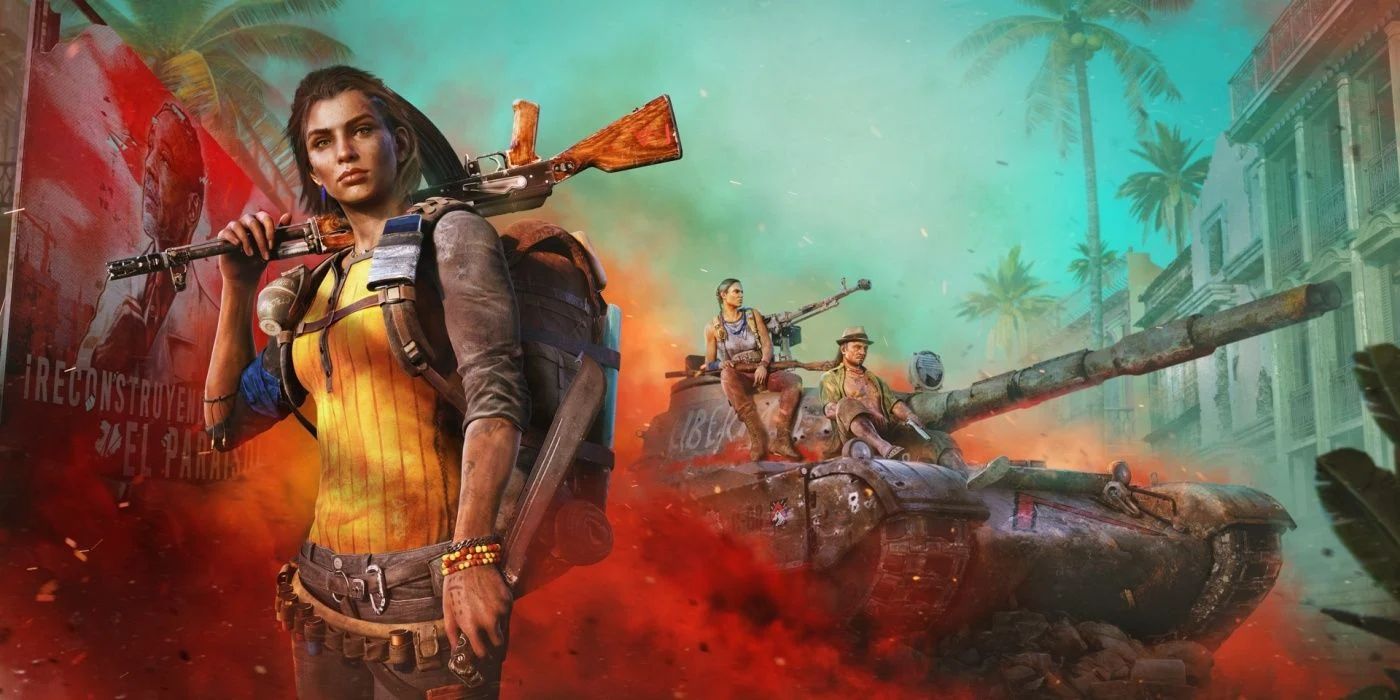
If you’re a fan of the Far Cry franchise, then chances are, you already know what to expect: If you’re new to the Far Cry franchise, here’s the down low. Since Far Cry 3 (at the very least), the franchise consistently follow particular, if not specific formula and premise: there’s a protagonist who isn’t necessarily a native to the lands and area they’ve been thrown into.
Following that, there’s also an antagonist who, despite having his chances of killing you slowly get whittled down as you progress through the game, is hellbent on making your life hell, along with the lives of everyone else that tries to help you.
In Far Cry 6, the main protagonist goes by the name of Dani Rojas, a resident living in Yara, a fictional island nation that draws inspiration from the real-life country of Cuba. From the start, the country is undergoing a purge of guerrillas, carried out by the de facto military forces. Just like in Far Cry 5 and New Dawn, you also get to choose Dani’s gender. For the record, I went with female Dani, simply because she sounds more interesting.
That said military force is being led by the El Presidente, Anton Castillo, whose role is played by none other than Giancarlo Esposito (of Breaking Bad, The Mandalorian, and The Boys fame). At the heart of the conflict is Viviro, an anti-cancer drug derived from genetically altered tobacco that is seemingly more effective than anything else on the market. Oh, and it’s proudly grown and manufactured in the nation of Yara.
After a traditional Far Cry in-game tutorial and the eventual deaths of her closest friends, Dani is forced to make a choice: stay on Yara and fight Castillo as a guerrilla, or find a way to get off the island nation and flee towards the US. Naturally and for the sake of the story, the game points you to the obvious choice to stay and fight, lest you discover the “secret ending” of the game.
What It Means To Be A Guerrilla
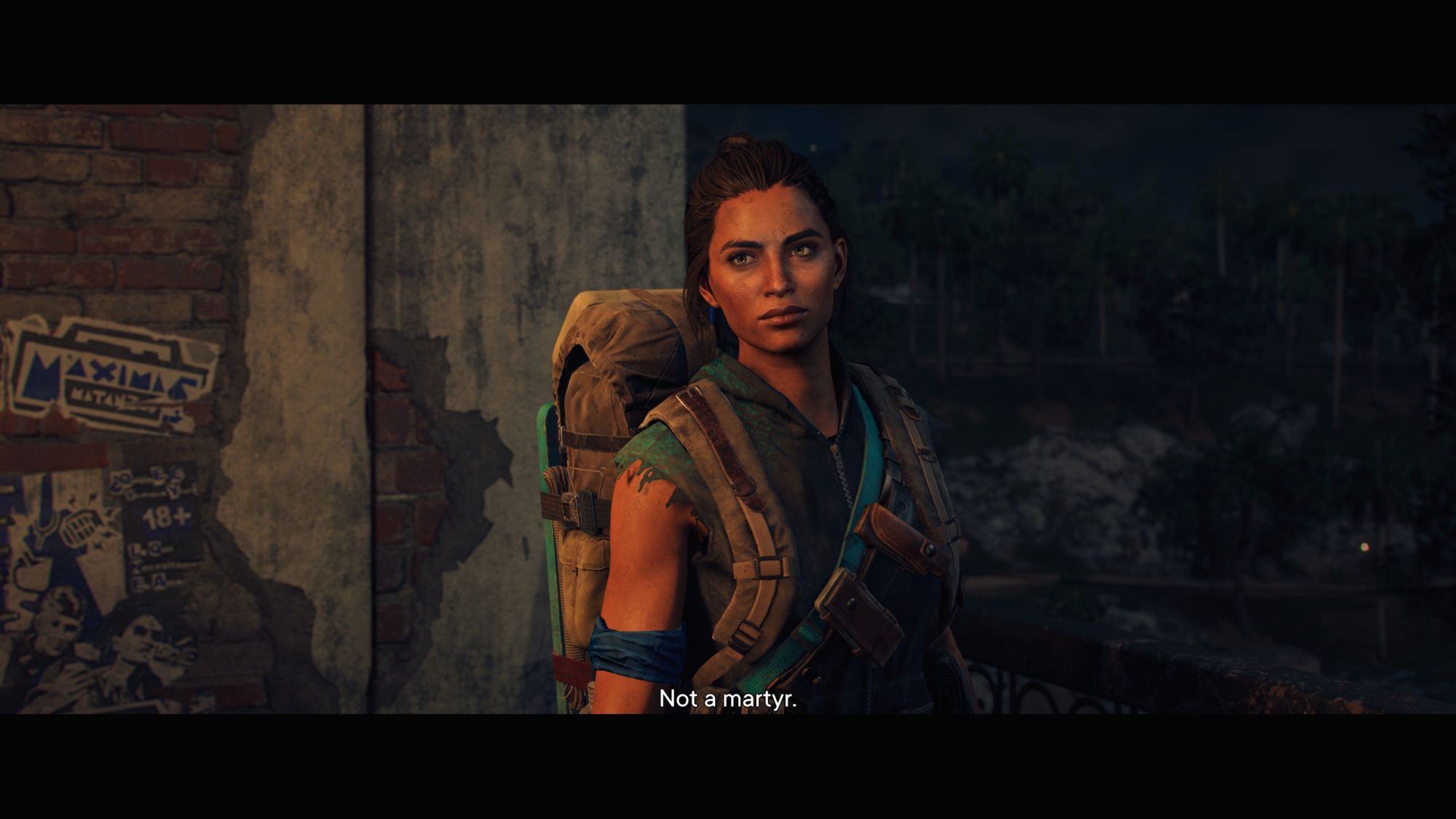
With the synopsis out of the way, we can now talk about what really makes the world of Far Cry 6 unique. As I said, the game marks the return of the franchise to the tropics. Of course, instead of a seemingly deserted island filled with flora, fauna, and cutthroat mercenaries trying to end your life, you’re now faced with flora, fauna, and a seemingly well-equipped and fully functioning army that is both corrupt and near-fanatical in its devotion to Castillo.
Unlike previous Far Cry titles as well as the premise of your protagonist, Dani Rojas. In past games, Ubisoft has constantly made the main character an outsider: someone who initially isn’t familiar with the locals but eventually becomes their greatest champion or ally. This time, Dani is a full-blown, born and bred Yaran, who has a history with the island, the people, and a deep-seated hatred for El Presidente.
The character changes don’t stop there either. Dani doesn’t just have a voice, she’s also got a personality and her own set of speech quirks, and they aren’t just one-liners or limited to the FMVs. Dani utters expletives in Spanish, say “Hi” back to the locals that actually greet her; she even has full-blown conversations with key NPCs, and even psyches herself up whenever she gets into combat. Heck, she’ll even sing along to whatever is playing when you get into a vehicle with a radio.
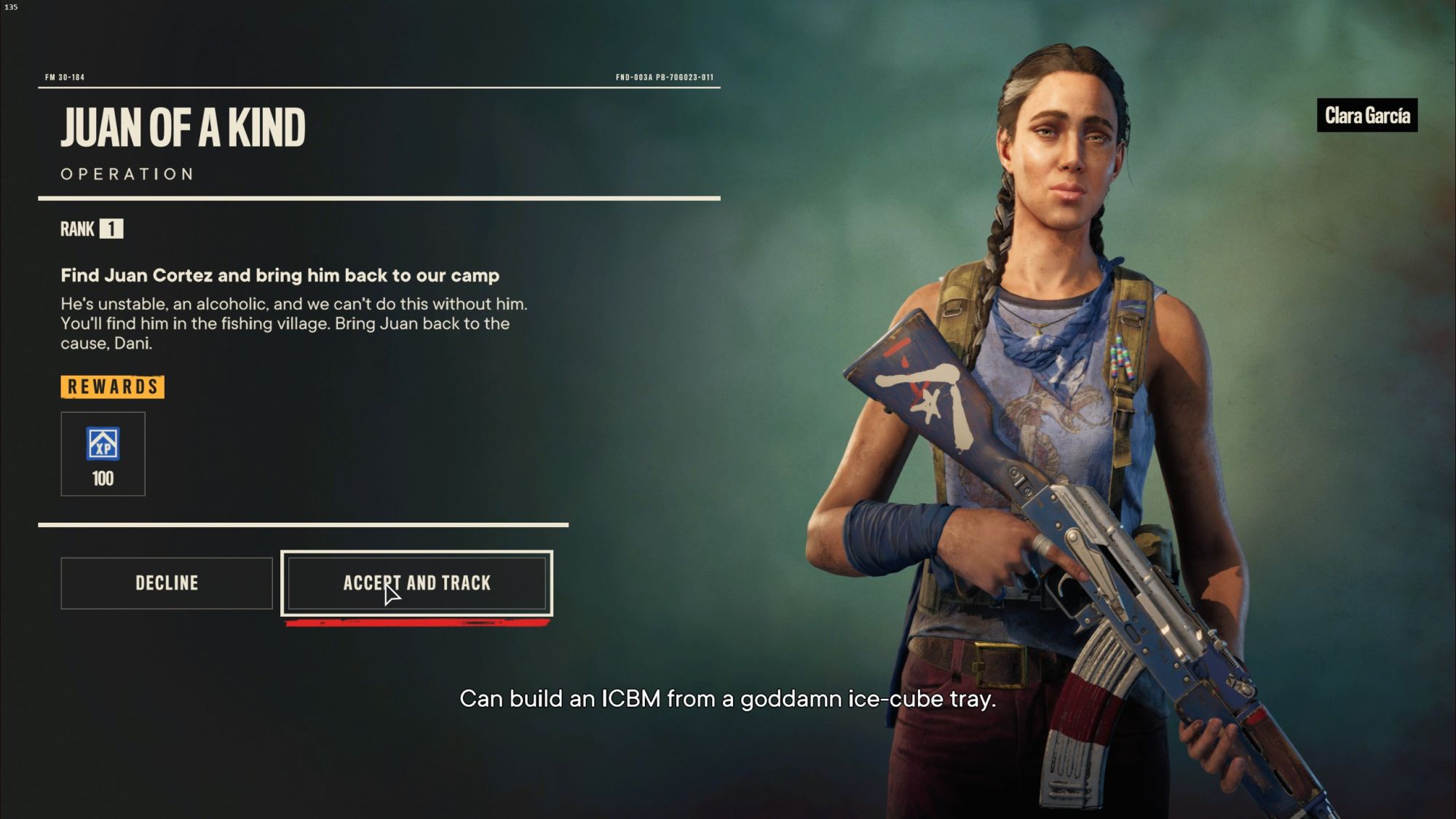
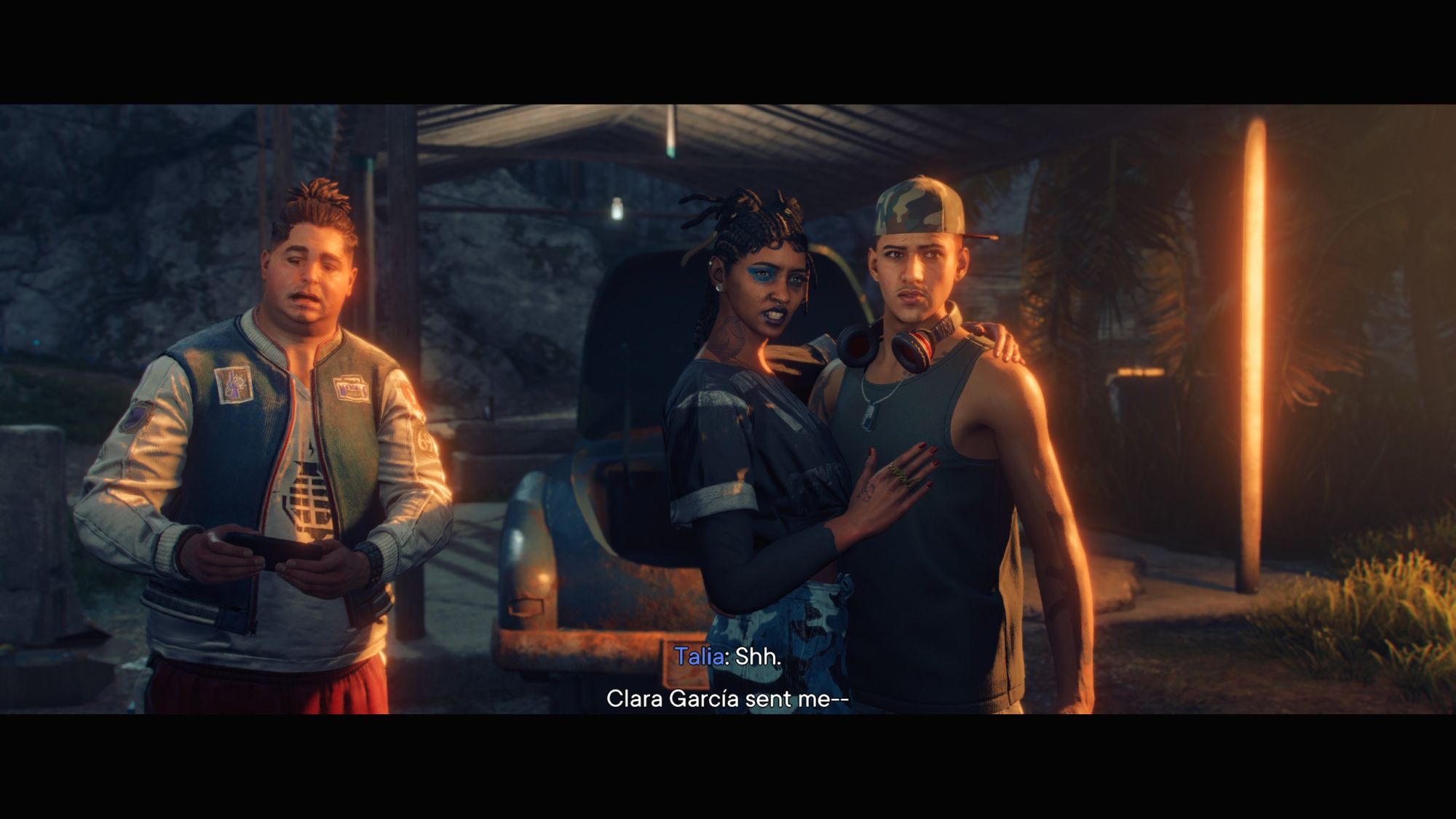
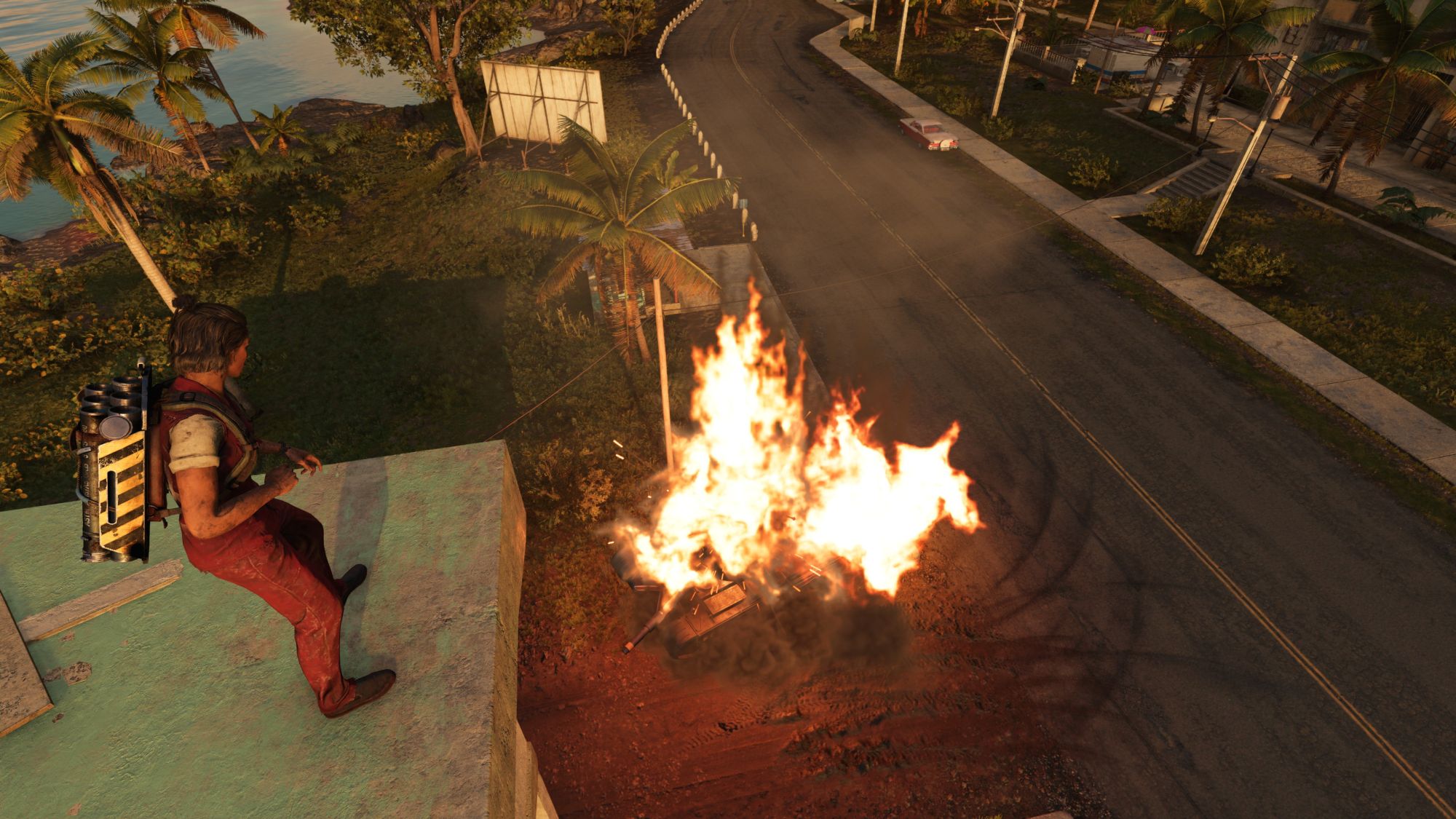
That’s another thing about Dani’s character: she’s not meek or a silent protagonist and in Far Cry 6, Ubisoft gives her a lot of screen time and I mean, a lot. Rather than fill players in with a first-person view cutscene, these cutscenes are more story-driven and engaging. Personally, I like it, because it actually lets us see Dani’s expressions, her reactions, but above all else, put a face to the name.
Sadly, I can’t say the same for Anton Castillo and the actor brought in to play him. Esposito’s spin on a dictator hell-bent on making his people bow down to his whim is captivating, but you’d think that with the sort of star power that Ubisoft brought in, Esposito would get more time on the screen and FMVs, but he doesn’t. Instead, the only time I ever get to engage with him is through said cutscenes, special moments, and of course, at the end of the game.
Esposito’s star power notwithstanding, the game is supported by a cast of interesting characters that help carry the story, with Dani along for the revolution.
Causing Chaos With Whatever You Have
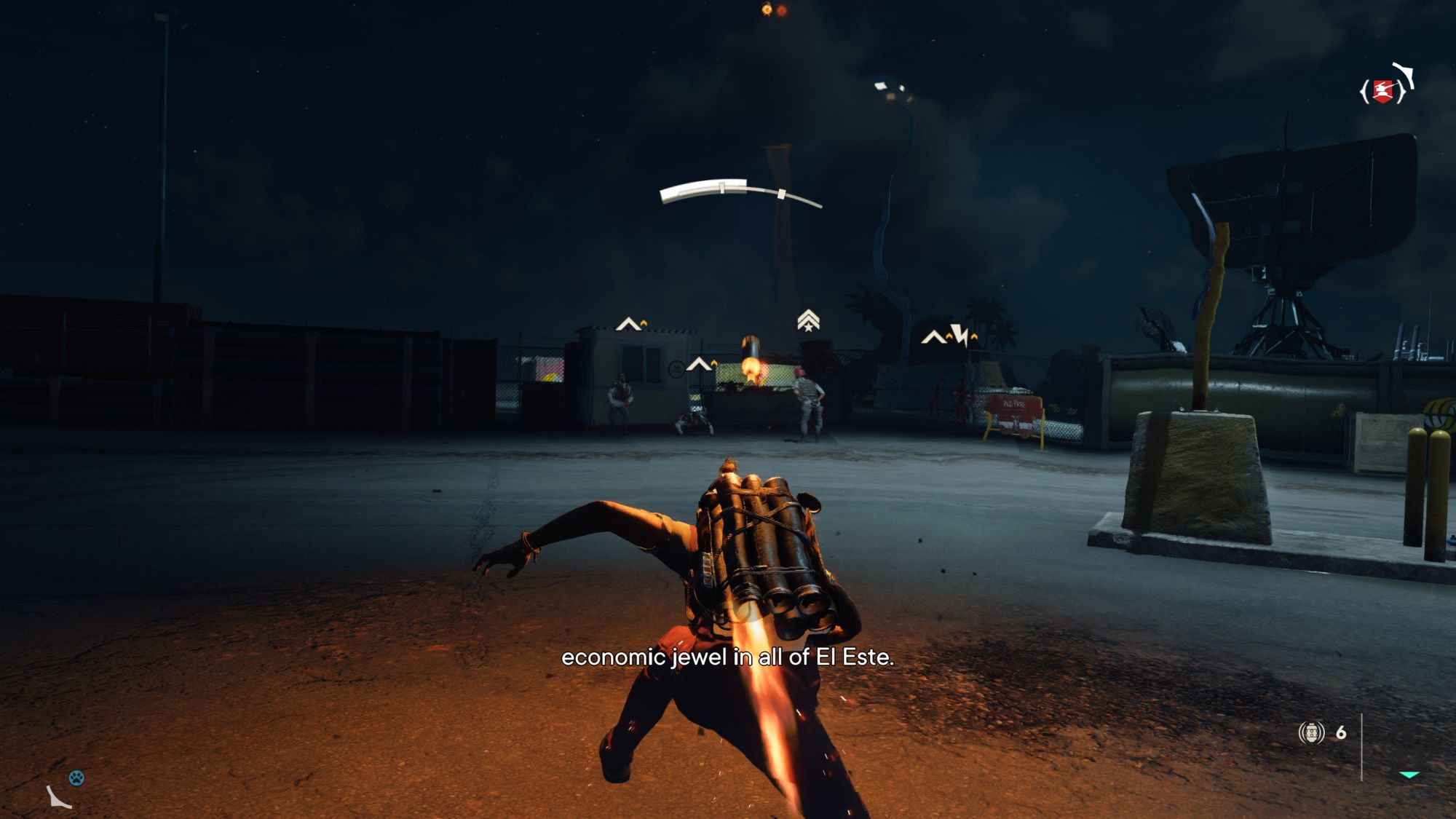
Combat and gunfights in Far Cry 6 are what I have come to expect from the series, particularly since Far Cry 3. To my surprise, though, the game’s developers have surprisingly made a few improvements to the mechanics, so as to prevent it from going stale.
So, let’s talk about Far Cry 6’s new “quality of killing” mechanics. There’s still a levelling system in place, but instead of earning points to pump into several skill trees, all these upgrades are divided up into “Gear” that come in five-piece ensembles. None of these skills are permanent and what sort of skills you want will depend on your playstyle. In my case, I was constantly switching between a set that let me run faster and another that would allow me to sync my melee kills, in a true one-man-army style.
Speaking of melee, takedowns are still represented by a glorified and stylised machete-driven kill. Unlike previous titles, though, Dani methods display less subtlety and finesse in finishing the job. That is, until you put on the gear I mentioned.
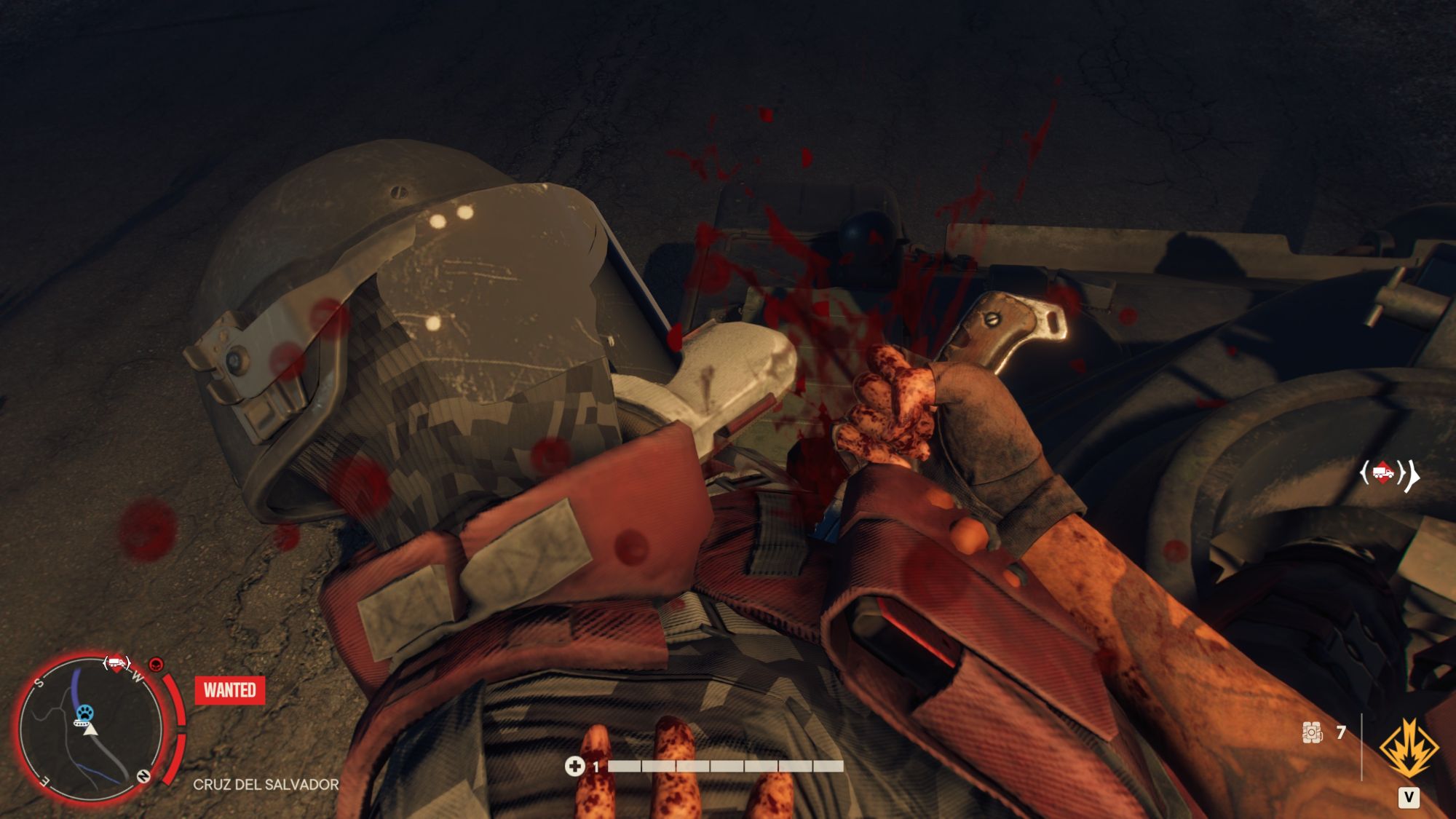
That brings us to the firearms of Far Cry 6 and once again, unlike previous titles in the franchise, weapon customisation is kicked up a notch. I’m not talking about buying one or two parts for a weapon and calling it a day either. In Far Cry 6, the game follows a mantra called Resolver: finding the right tools for the right job. For rifles and pistols, that means scrapping together everyday parts to piece together make-shift silencers, laser pointers, or crude-looking scopes to improve your aim. And instead of money, these accessories require raw materials that can be the game’s version of masking tape and – I’m not kidding here – Depleted Uranium.
The latter isn’t so much used to put together components, as it is to purchase special, custom-made Resolver weapons and special backpacks that I will get to in a bit. For those who have played Far Cry New Dawn, you may find some weapons, such as the CD launcher, similar to the buzz saw launcher, but it more or less ends there. These special Resolver weapons include a make-shift harpoon launcher that is practically a one-hit kill against soft-round targets; a compact flame thrower that looks surprisingly solid; and a Gatling gun that is clearly fashioned out of an old car engine, among others.
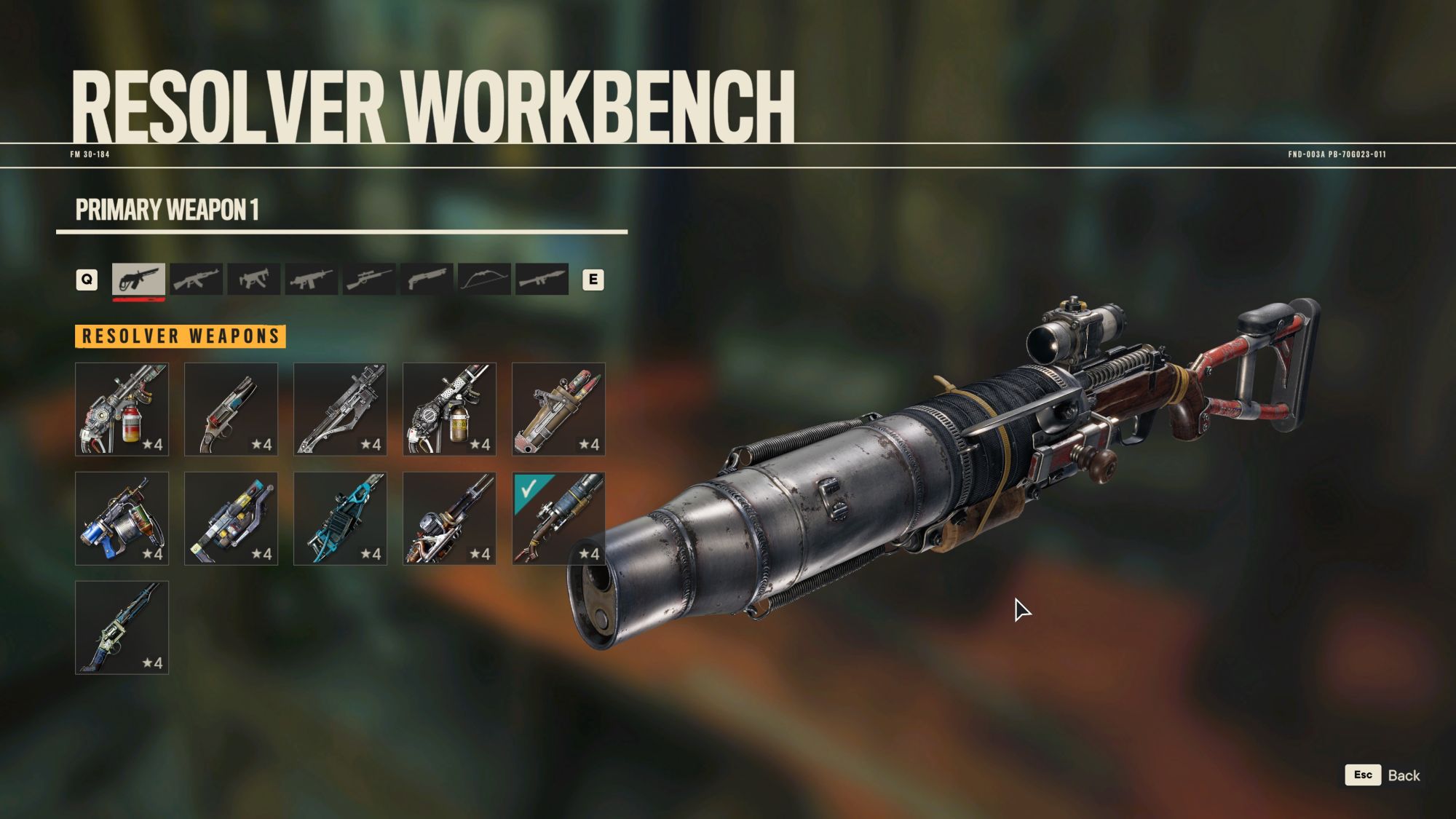
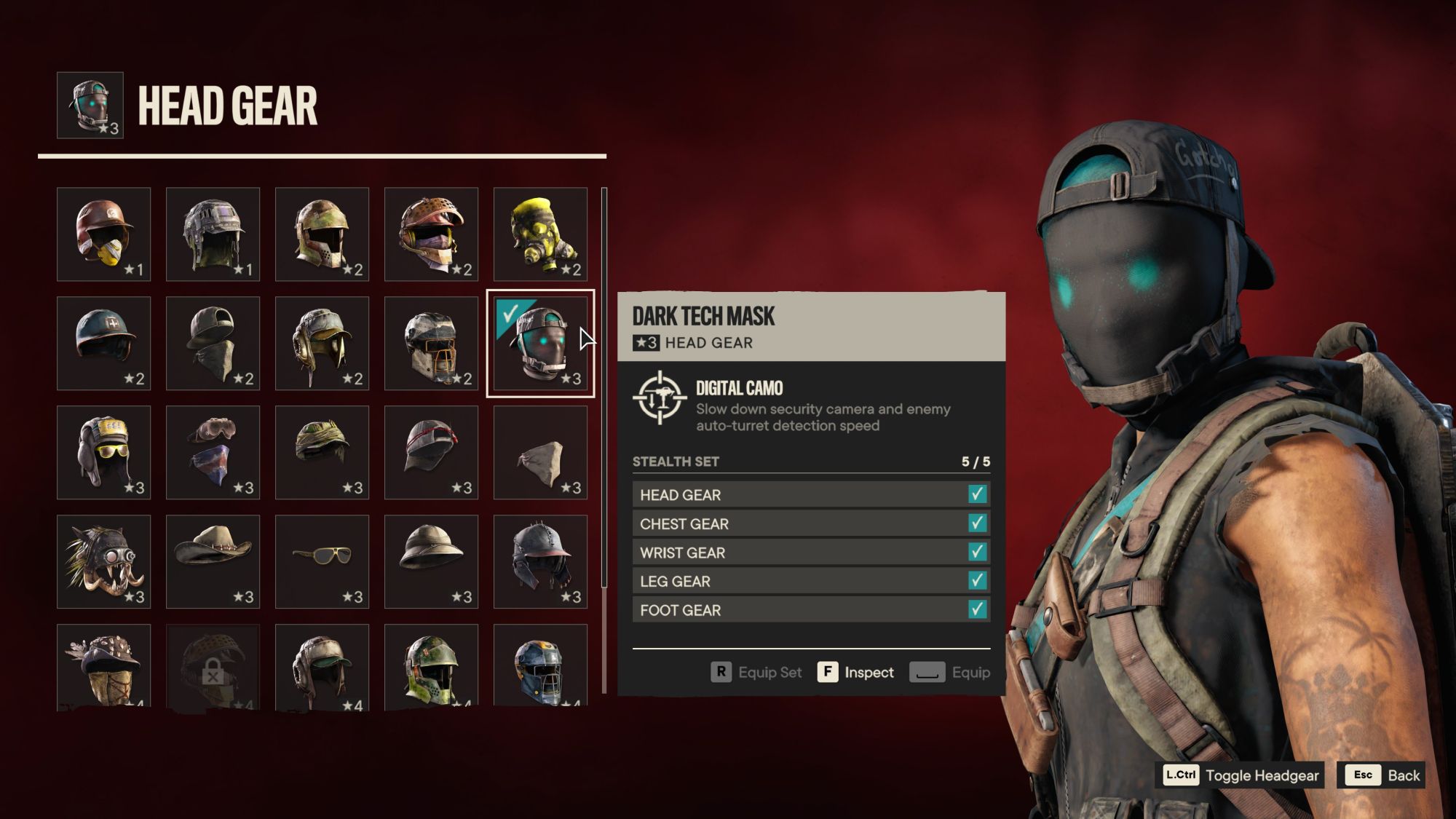
Used under the right circumstances, these Resolver weapons aren’t just tools; they enable Dani to wreak havoc on anyone and anything that gets in her way.
Getting back on the subject of customisation, there’s also a variety of ammunition to choose from. For the standard firearms, you start off with soft-round targets that are great at inflicting damage on unarmoured targets, but as you progress through the game, you’ll realise that you need to up the ante by changing it up a bit. And by that, don’t be surprised if you find yourself using two or three rifles or SMGs, but with different ammunition types.
Oh, and you can even equip each weapon with a passive mod, ranging from recharging your Supremo gauge quicker to regaining health with each kill you make. It’s an unrealistic element, I know, but ultimately, I can see why Ubisoft would implement this RPG element into the game.
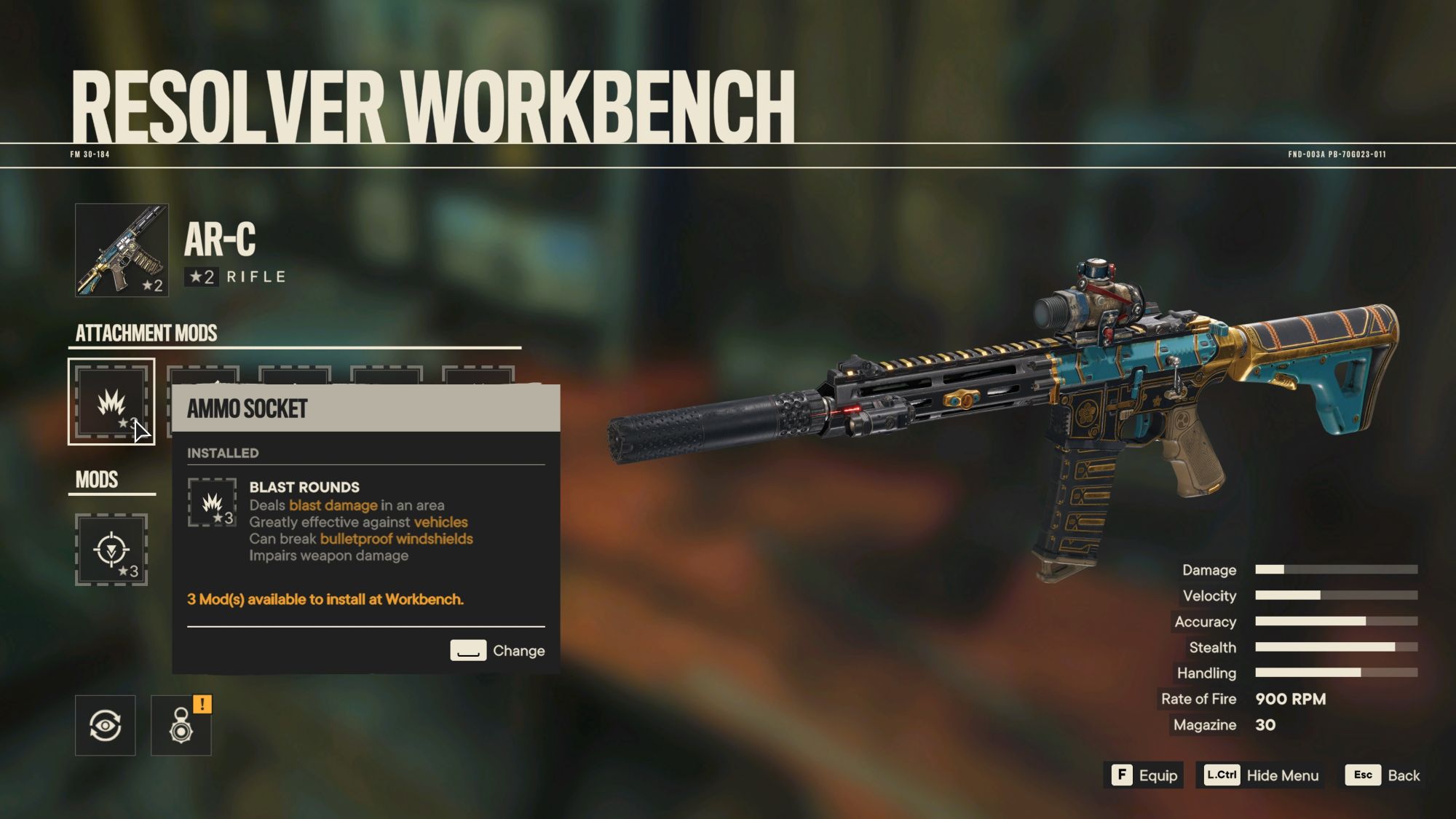
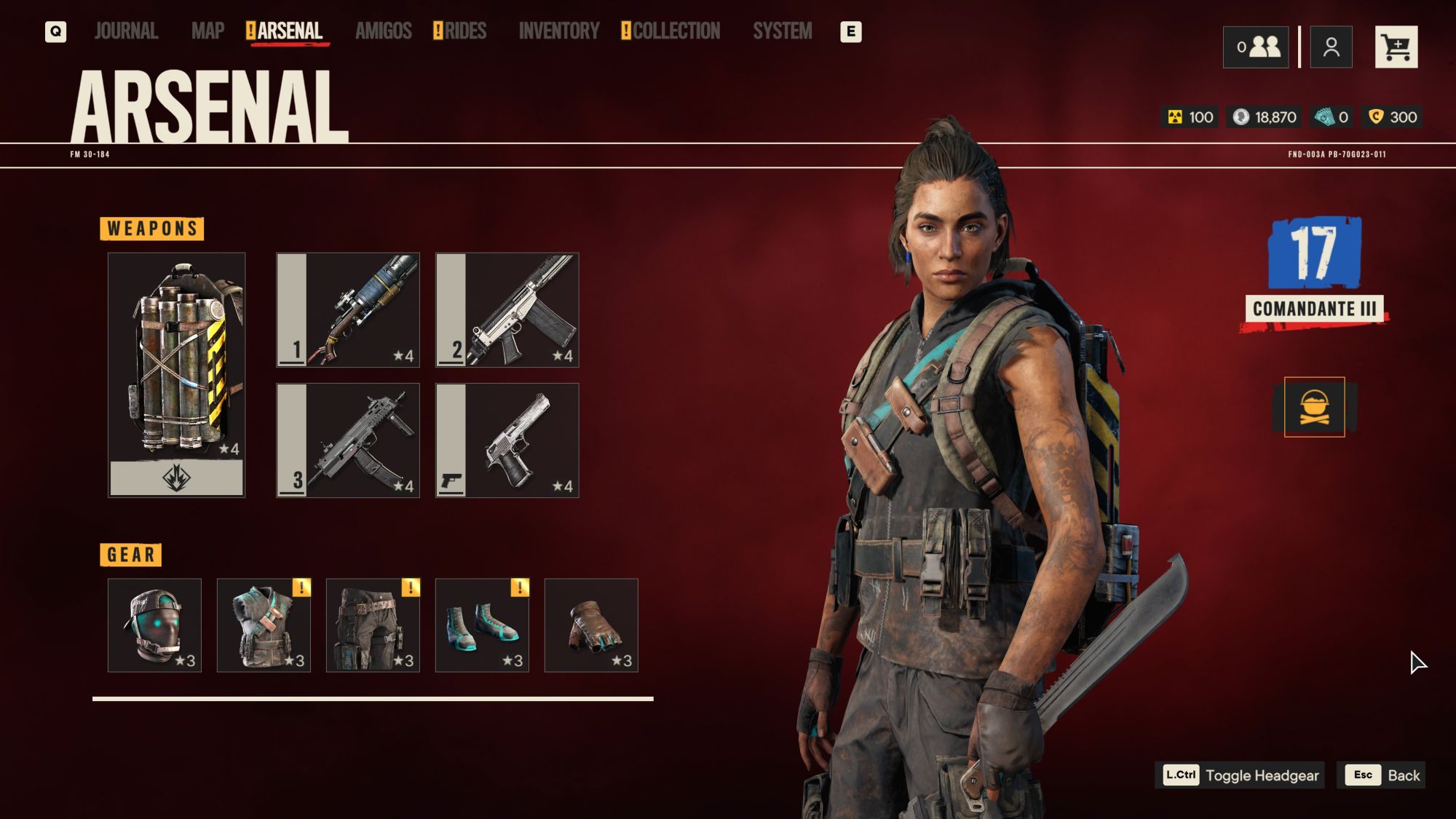
On the subject of RPG elements, let’s talk about the levelling system. As I said, levelling up in Far Cry 6 doesn’t reward you with any points. What it does instead is unlock access to different firearms, Resolver weapons, gears, and Supremo backpacks. By the way, the majority of firearms can be discovered throughout Yara, but if you’re lazy to go hunting, then this option is here for you. They’ll cost you a varying amount of Yaran Pesos, but again, for the Supremo backpacks and Resolver weapons, those require the earlier mentioned Depleted Uranium.
As for combat mechanics, I will say this: if you’re a fan of the Far Cry series, picking fights and raiding bases will feel like an old hand to you. The weapons and area may have changed, but the capture process still remains the same. Raiding checkpoints and FND bases reward you with resources and some weapons. You can still fire your weapon while inside a vehicle, but to spice things up, you can now use a tank to take over an area.
Supremo!
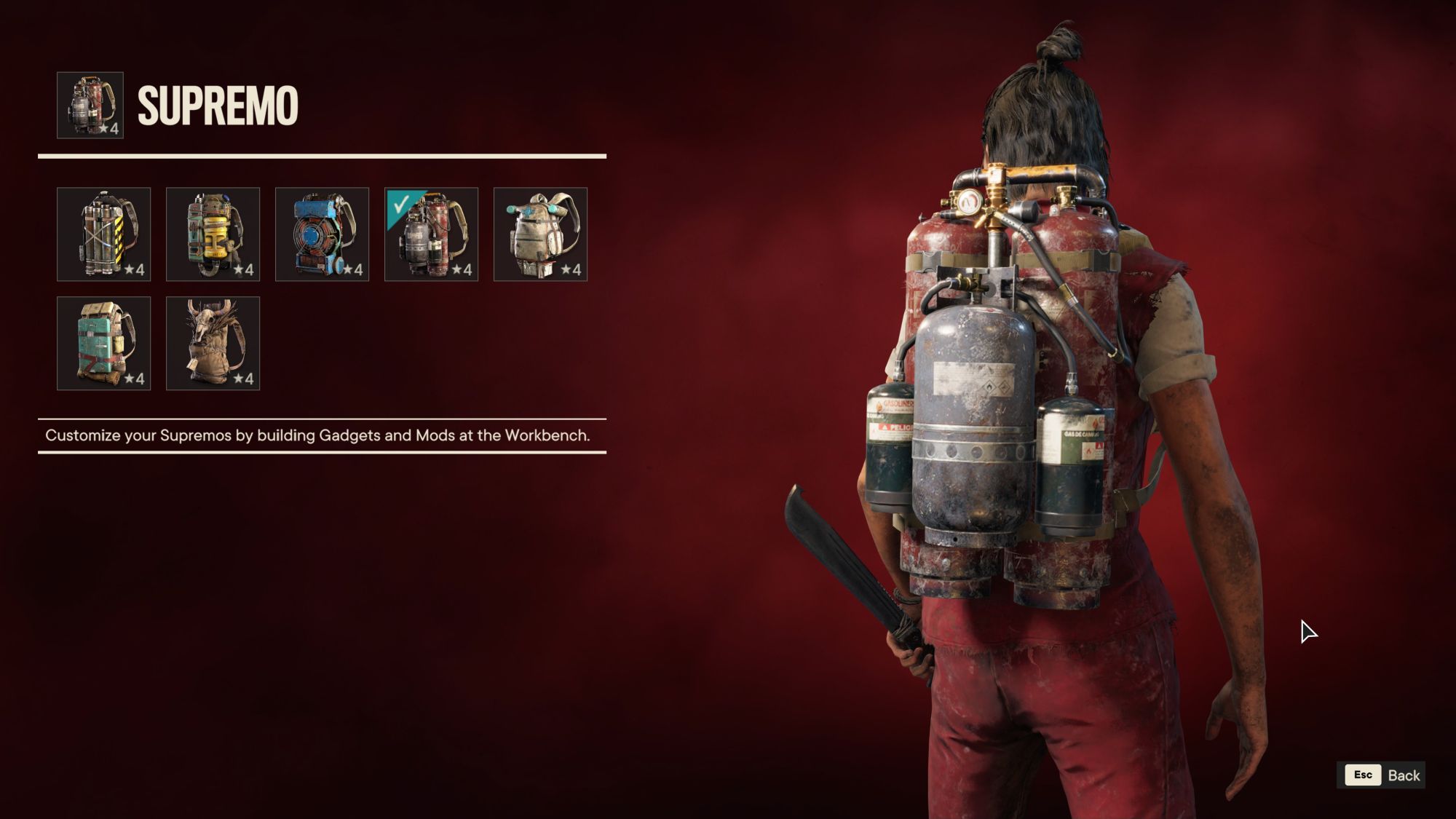
Beyond the gear, firearms, and make-shift weapons, Far Cry 6 is the first in the series to introduce a new one-button-kills-all feature: the Supremo backpack. These backpacks serve as a multi-tool, serving not just as portable weapons of considerable destruction, but also to carry up to four different tools, such as baseballs and grenades, and the likes. In total, there are seven Supremo backpacks and like Resolver weapons, each has their own unique function. When you first gain access to it, you start off with the Exterminador and if you’ve seen the trailers, it fires off homing rockets at random mobs in front of you, providing a wonderful display of explosions and death.
There’s also the Volta, which is basically a portable EMP generator that emits a large shockwave, knocking out all electronics within a radius. Feel like getting up close and personal? The Gladiador’s got you covered for your adrenaline and machete needs.
Oye! Amigos!
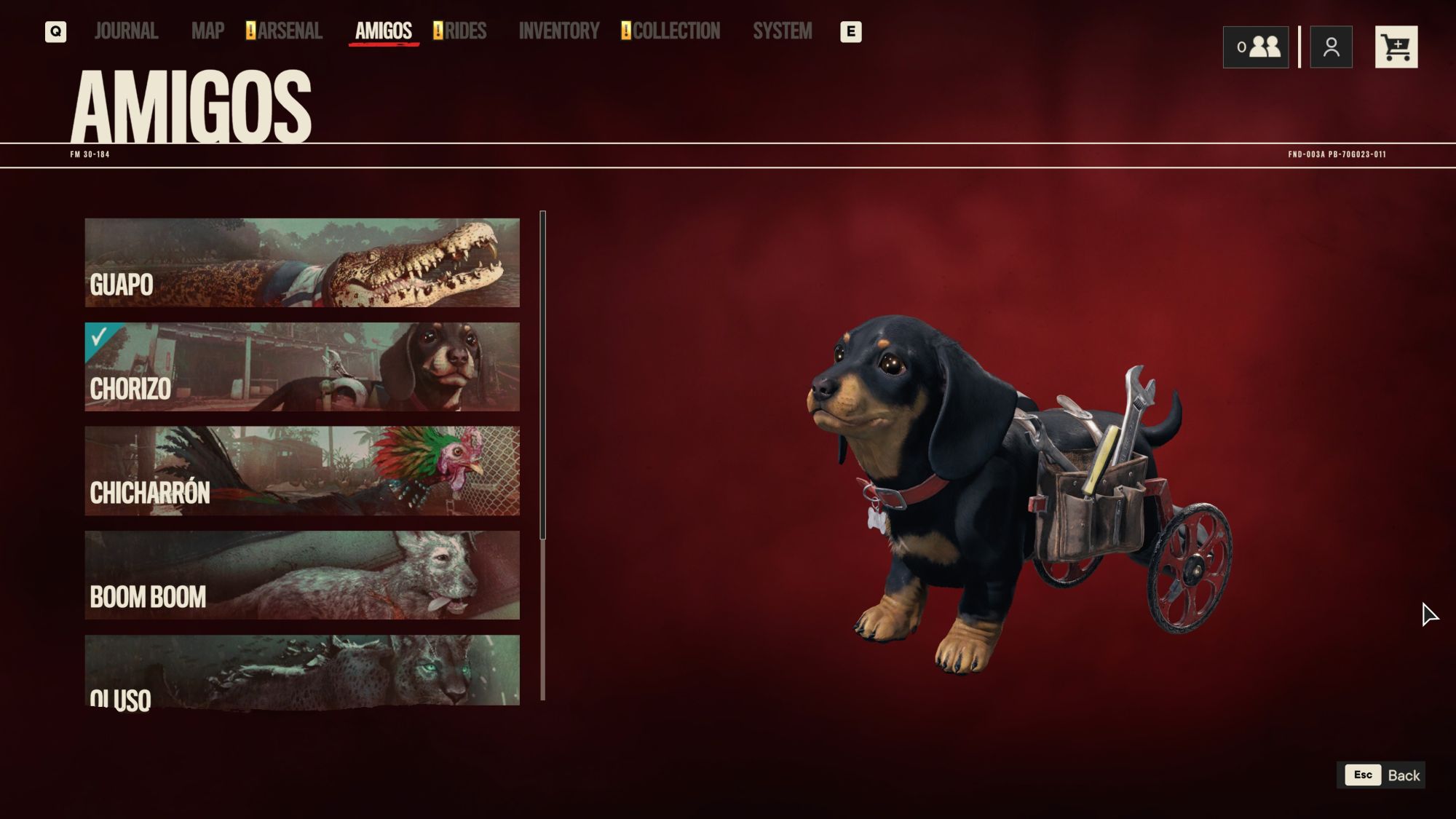
Another feature making a return to the series is the buddy system, albeit in a more streamlined and non-human form. Of course, this being a Latin American-themed game, your companions are affectionately referred to as Amigos and, if I didn’t already make myself clear, all of them are animals. You get a total of five Amigos – seven if you buy the top-tier edition of the game – each of them, unsurprisingly, with their own traits and passive abilities. Guapo, one of the first amigos you get in-game, is an alligator that’s perfect for guns blazing situations. Granted, he’s not really a bullet sponge, but as he levels up, he toughens up and is even capable of self-reviving in the heat of battle.
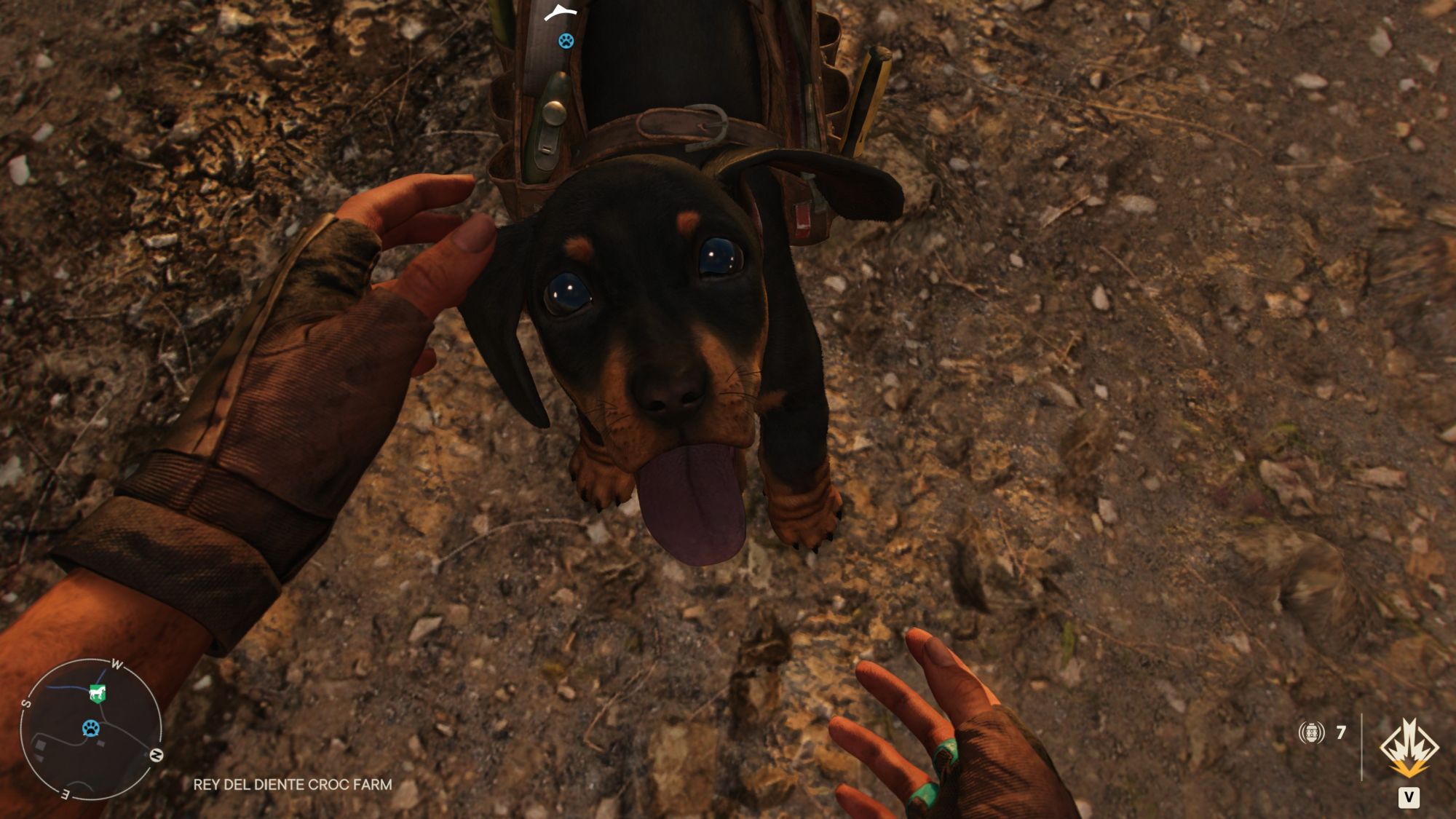
But the one amigo that is perhaps my favourite – purely winning on cuteness factor alone, too – is Chorizo, the wheelchair-bound Dachshund. Due to his diminutive nature and said cuteness, Chorizo is can easily distract guards and enemies, while you get in close and take them down. Before you ask: yes, you can pet Chorizo, and again, he is that cute.
Taking In The Sight
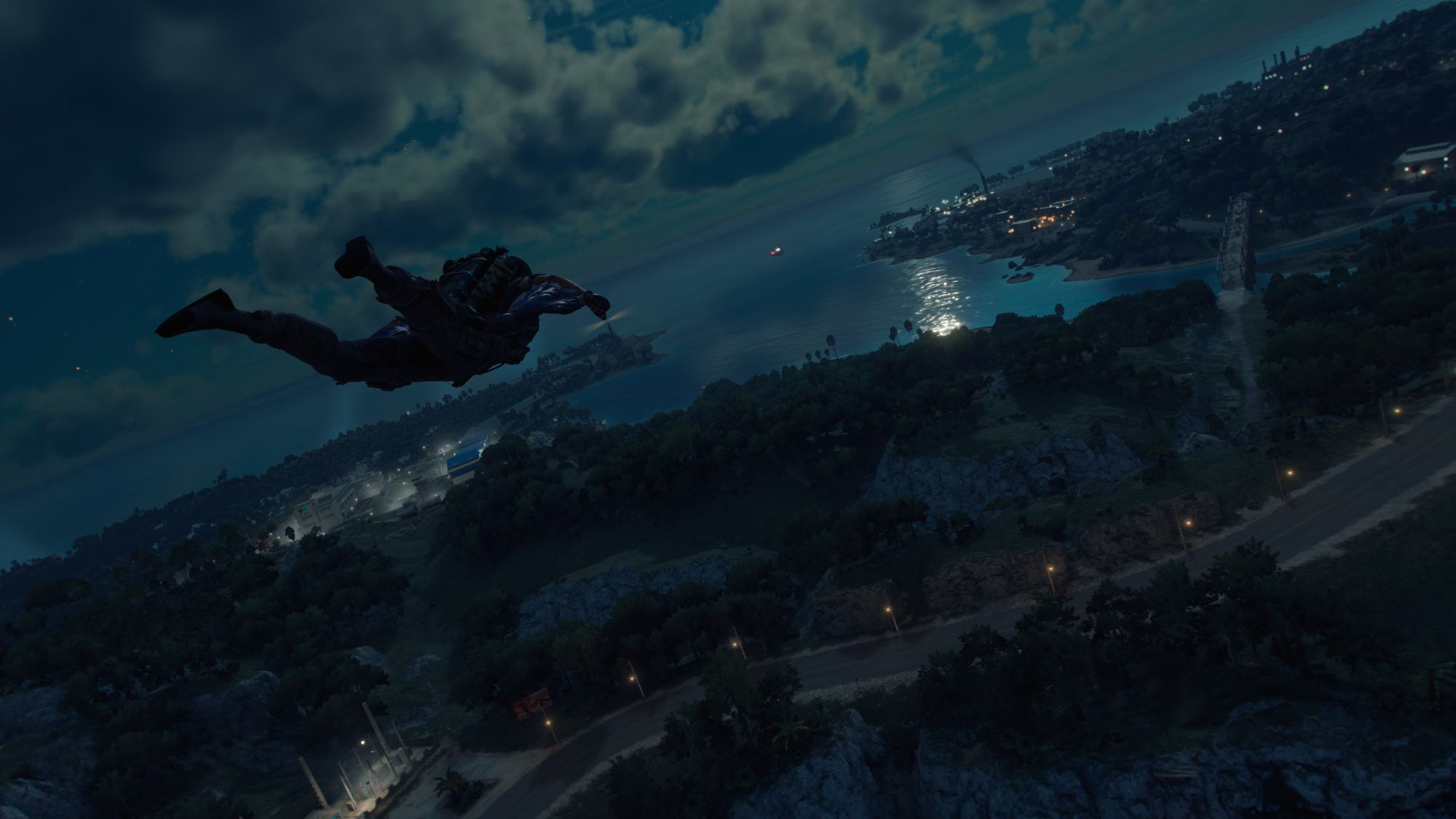
Another main attraction to Far Cry 6 is, naturally, the stunning visuals. From swaying palm and coconut trees around the island, to the gradually shifting blue seas, to the brightly coloured colonial buildings and Castillo’s massive Torre de Leon in Esperanza. It’s clear that Ubisoft has spared no expense in recreating an environment based on an island nation that was once at the very centre of the Cold War.
If you’re playing the game on PC like me, there’s also the ray-tracing feature you can switch on and HD textures, but do be warned that in my time playing the game, turning on the latter can sometimes have the opposite effect and produce some really low-textured polygons on Dani and the weapons.
All in all, Far Cry 6 is a game worth playing for several reasons. For me, it’s a game that shifts away from franchise’s norm of an unsung hero, giving Dani a face and voice, which is interestingly ironic, considering the theme of the game is all about getting a tyrannical government to admit and accept the will of the people.
The post Far Cry 6 Review: Una Guerrilla Hasta El Final Amargo appeared first on Lowyat.NET.
0 Commentaires